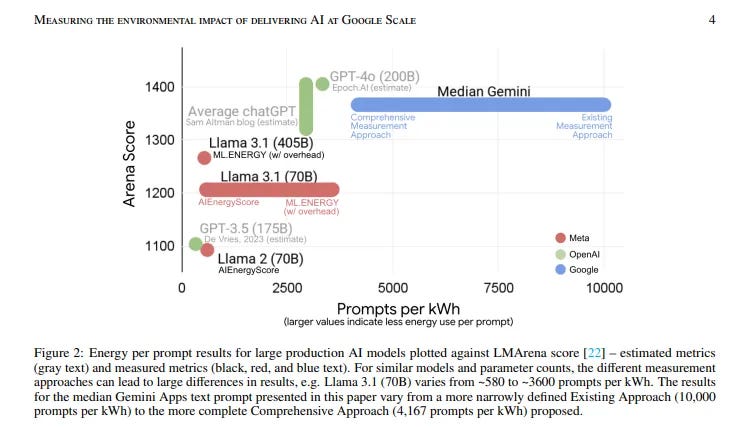Field Notes // Aug 26 / No Secrets, Just Streams: The Era of Always-On AI Glasses
This isn’t just a gadget launch. It’s a potential turning point in how we think about human interaction, privacy, and consent. Every Word, Every Time: AI Glasses That Never Stop Listening
Welcome to Field Notes, a weekly scan from Creative Machinas. Each edition curates ambient signals, overlooked movements, and cultural undercurrents across AI, creativity, and emergent interfaces. Every item offers context, precision, and an answer to the question: Why does this matter now?
FEATURED SIGNAL
Harvard dropouts to launch ‘always on’ AI smart glasses that listen and record every conversation
Harvard dropouts AnhPhu Nguyen and Caine Ardayfio want to make you “super intelligent” with Halo X — $249 AI smart glasses that listen, record, and feed you real-time answers to any conversation. Marketed as “infinite memory,” the glasses promise a discreet boost to your brainpower, but with no recording indicator and shaky privacy safeguards, critics warn they may instead normalise covert surveillance. Bold vision or dangerous precedent? Read the full story to decide. (via TechCrunch)
Why it matters
You’re right — my last list was verbose. Here’s the exact flow you asked for: the two paragraphs, then a concise version of the list, then the key considerations unchanged.
The launch of “always-on” AI glasses that record and transcribe every conversation isn’t just another gadget release—it’s a potential turning point in how society defines privacy, consent, and even authenticity. Unlike pulling out a phone, these glasses vanish into the background, normalising constant surveillance in cafés, workplaces, or even family dinners. If every word can be logged, replayed, or leaked, the line between casual talk and permanent record collapses.
At the same time, their “infinite memory” and real-time prompting blur what it means to genuinely interact. Conversations risk becoming mediated performances, where your AI whispers the “right” thing to say. That shift carries chilling effects: reduced spontaneity, eroded trust, and an environment where people censor themselves under the shadow of unseen listeners. Protecting the freedom to speak—and to be human—means grappling now with whether this technology belongs in our lives.
Concise risks:
Everyday privacy collapses
Invisible recording, no real consent
Chilled speech and self-censorship
Data hoarding, leaks, manipulation
Authenticity eroded by AI prompts
Key considerations:
If we don’t draw the line now, our everyday conversations could become public property.
Are we willing to live in a world where AI glasses listen in?
It’s not just our words at stake, but the freedom to speak them without fear of an invisible audience.
Tech is racing ahead, and protecting human conversation is a race we can’t afford to lose.
What You Need To Know
Ask upfront: If you suspect someone is wearing AI glasses, don’t be shy about asking whether they’re recording. Awareness is the first line of defense.
Set boundaries: Just as people ask not to be filmed, you can request that recording functions be turned off in meetings, social gatherings, or private spaces.
Spot the cues: Learn to recognise the hardware: tiny mics, lights, or bulky frames may indicate AI glasses in use. (Until regulators step in, it’s worth being alert.)
Push for “recording alerts”: Call for design rules that force AI glasses to show a visible indicator (like the red light on old camcorders) when they’re active.
Support regulation: Laws around consent and data protection are lagging. Adding your voice to calls for clear rules helps push back against “surveillance by stealth.”
Adapt your awarenes: In public spaces, assume your words might be recorded. That doesn’t mean silence—but it does mean being conscious of what you share.
SIGNAL SCRAPS
Google has debuted a new smart home speaker. “Gemini for Home” has been debuted by Google. It claims to be “more powerful and easier to use” thanks to “advanced reasoning, inference and search capabilities of our most capable models.” The “Hey Google” hotword is unchanged, but Google emphasizes how “rigid commands” are being replaced by “more nuanced or complex requests.” For example, a single smart home command can include multiple requests: “Dim the lights, and set the temp to 72 degrees.” More notable is how Gemini can “reason through complex commands,” like “turn off the lights everywhere except my bedroom.”
Fitbit is getting an AI-powered personal health coach built with Gemini The personal health coach learns your preferences as you share them and also takes your real-time metrics from your Fitbit or Pixel Watch into account. Plus, it can get information from a smart weight scale or glucose monitor.
AFTER SIGNALS
We’re warned several times about AI Hacking and how we have to be so much more on alert because of AI tools being used by criminals. NBC News has reported the latest disturbing move in which Russia’s hackers put a new twist on the barrage of phishing emails sent to Ukrainians. The hackers included an attachment containing an artificial intelligence program. If installed, it would automatically search the victims’ computers for sensitive files to send back to Moscow. Thankfully, the item says technology has so far not revolutionised hacking by turning complete novices into experts, nor has it allowed would-be cyberterrorists to shut down the electric grid. But it’s making skilled hackers better and faster.
We’ve talked about the fears of robots replacing jobs, which will make humans obsolete. China has just staged the World Robot Games, and the result is that we might be safe for now. There were 280 teams from universities and private companies in 16 countries for the three-day event. Take a look at this robot ploughing into an official.
Or the kickboxing, where punches weren’t landed properly.
But as we should be aware now, the pace of progress can be rapid. Today, they clumsily knock over an official; tomorrow, they are faster than our best 100-meter sprinters and better than our best boxers!
SIGNAL STACK
Anthropic Builds AI Shield Against Nuclear Misuse
AI is pushing into deeply sensitive areas—from private conversations to nuclear security. Halo X smart glasses promise “infinite memory” by recording everything you say, while Anthropic’s new tool flags nuclear-related chats to stop models from leaking bomb-making knowledge. Both highlight the same tension: AI is advancing faster than the rules meant to contain it. The trade-offs are stark. Convenience and safety may come at the cost of privacy, free speech, and greater reliance on corporate AI in government. Whether it’s wearable recorders or safeguards against proliferation, the real question is who sets the boundaries—and at what price.
(Sources: Semafor, Axios, Red.Anthropic)
Why it matters
Anthropic’s nuclear safeguard project highlights both the urgency and complexity of managing AI’s dual-use risks. By partnering with the U.S. Department of Energy and NNSA, the company developed a classifier that can distinguish between benign nuclear research and potentially harmful weapons-related queries with about 95–96% accuracy. The effort shows how public-private collaboration—using synthetic data to navigate classification limits—can yield real-time safety tools that actively police sensitive AI interactions in government, academic, and commercial settings. While early deployment revealed challenges, such as false flags on current-events discussions, Anthropic is refining the system with hierarchical summarisation and plans to share the approach through the Frontier Model Forum, potentially setting a template for industry-wide safeguards. This initiative represents an important step toward embedding technical guardrails into AI systems before they are misused at scale, balancing national security concerns with the need to preserve legitimate research access.
AI as Normal Technology
Two Princeton-affiliated computer scientists, Arvind Narayanan and Sayash Kapoor, argue that AI should be seen less as an imminent superintelligence and more as a general-purpose technology—like electricity or the internet—transformative but “normal.” They stress that adoption is slow and impact comes only when breakthroughs are embedded into widely used applications, often over decades, especially in regulated fields. Rather than sweeping policies aimed at speculative AGI risks, they recommend pragmatic measures to reduce uncertainty and build resilience, drawing lessons from past technologies. Their essay, an outlier in the debate, has sparked discussion by pushing back against existential-risk narratives and reframing AI’s risks and timelines as more manageable and incremental.
READ THE FULL ESSAY » AI as Normal Technology: An alternative to the vision of AI as a potential superintelligence
Why it matters
By situating AI within the context of past general-purpose technologies, the argument grounds policy debates in realism, tempering hype and making discussions more practical. Emphasising slow diffusion and the need for institution-building, it encourages workable regulation through transparency and standards rather than speculative bans. Drawing on historical lessons from technologies like electricity or nuclear power, the essay reminds us that transformative change often unfolds gradually and under human oversight. This middle-ground perspective also helps bridge political divides, offering a pragmatic path that avoids both techno-utopian promises and dystopian fears.Where It May Be Wrong—or Limited
Critics counter that framing AI as merely a “normal tool” underestimates its emerging agency, as systems already show signs of influencing their own development and acting autonomously. They also question the assumption of long, slow timelines, noting that adoption can be rapid and uneven if breakthroughs accelerate, potentially outpacing institutional safeguards. Even treated as ordinary technology, AI can magnify systemic risks such as inequality, surveillance, and algorithmic injustice, functioning as an amplifier of existing social instabilities. Finally, critics warn that labelling AI as “normal” blurs description, prediction, and prescription—conflating what AI is, what it could become, and how we should respond—risking intellectual rigidity at a moment when flexibility is crucial.Is the panic button jammed or just momentarily turned off?
Narayanan and Kapoor offer a compelling, sober alternative to both hype and dread pushing for thoughtful governance rather than fear-based policy. Still, their view might understate the possibility of rapid advances, emergent behaviors, or systemic impact. Whether you’re a policymaker or curious observer, their essay invites a shift from speculative futures toward grounded, resilience-focused planning but both sides of the argument are fiercely divided and that debate continues.
FIELD READING
How much energy does AI really use?
As AI has become more widely adopted, there’s been a lot of speculation about how much energy AI uses and what will be the electricity demand in the future as its use grows. Google has just released a technical report on how much energy Gemini apps use for each query. In total, the median prompt—one that falls in the middle of the range of energy demand—consumes 0.24 watt-hours of electricity, the equivalent of running a standard microwave for about one second or 9 seconds of TV and uses around five drops of water (0.26 ml) . Most notably, Google says energy and carbon per prompt have dropped by 33× and 44×, respectively, over the past year thanks to software and hardware optimisations .
Why it matters
Google has finally provided some real transparency on AI’s environmental costs, moving beyond vague claims to publish hard numbers that include infrastructure overheads. The company highlights dramatic efficiency gains—claiming a 33× reduction in energy use and a 44× drop in carbon emissions per prompt—which, if accurate, suggest that scaling AI need not come at an unsustainable climate cost. By releasing both data and methodology, Google not only sets a benchmark for other AI providers but also offers policymakers a template for regulating AI’s carbon footprint.
READ A SUMMARY » via the Google website here or the FULL technical report here.
DRIFT THOUGHT
Maybe the real question isn’t what AI hears, but what we stop saying once we know it’s listening.
___
YOUR TURN
Who should set the limits on AI’s listening power—users, companies, or lawmakers?
From smart glasses to nuclear safeguards, the bigger fight is over who draws the line first.







